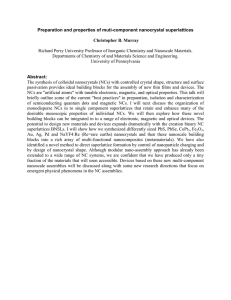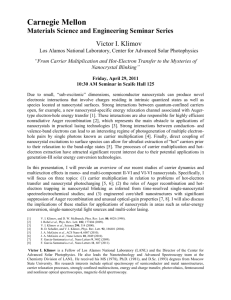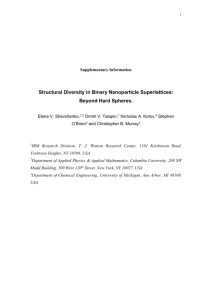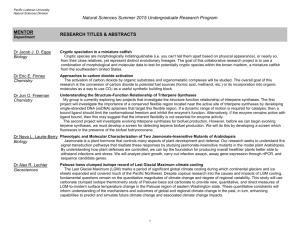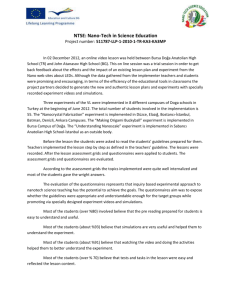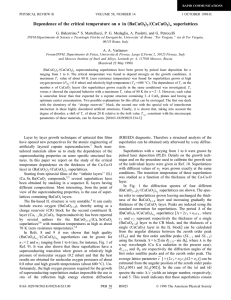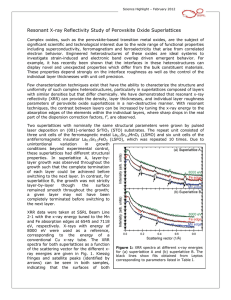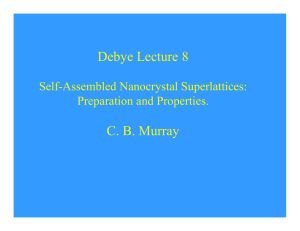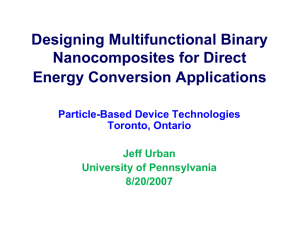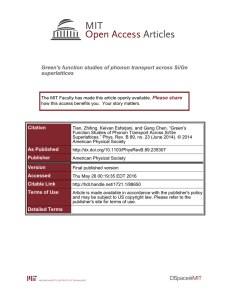Mechanical Properties of Nanocrystal Superlattices
advertisement
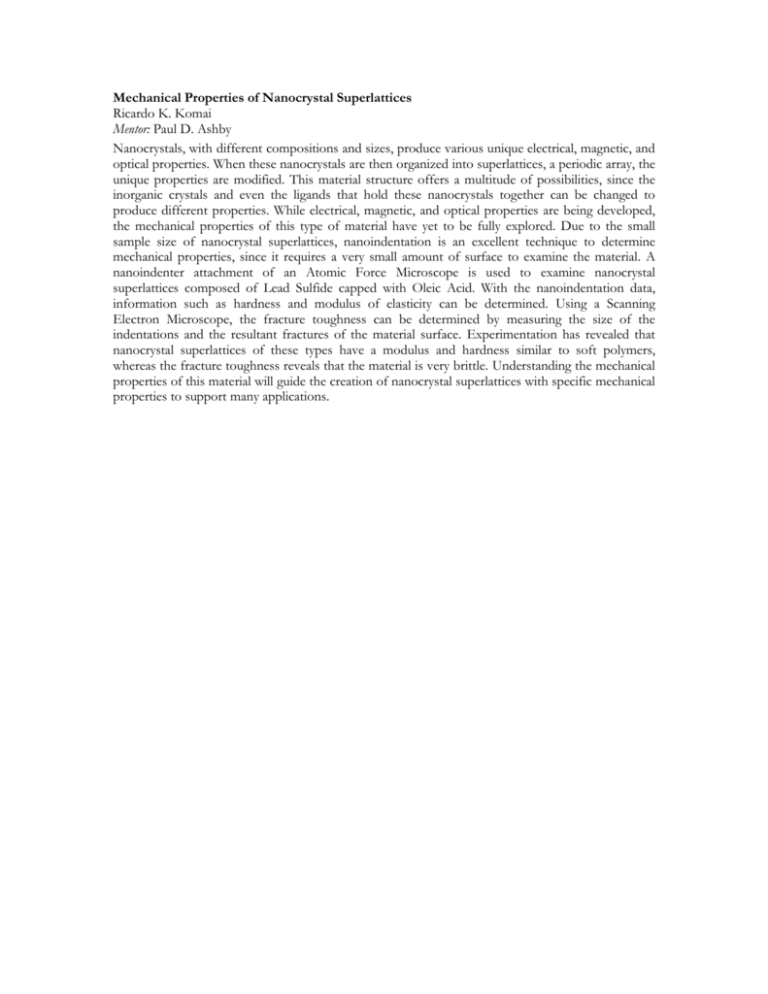
Mechanical Properties of Nanocrystal Superlattices Ricardo K. Komai Mentor: Paul D. Ashby Nanocrystals, with different compositions and sizes, produce various unique electrical, magnetic, and optical properties. When these nanocrystals are then organized into superlattices, a periodic array, the unique properties are modified. This material structure offers a multitude of possibilities, since the inorganic crystals and even the ligands that hold these nanocrystals together can be changed to produce different properties. While electrical, magnetic, and optical properties are being developed, the mechanical properties of this type of material have yet to be fully explored. Due to the small sample size of nanocrystal superlattices, nanoindentation is an excellent technique to determine mechanical properties, since it requires a very small amount of surface to examine the material. A nanoindenter attachment of an Atomic Force Microscope is used to examine nanocrystal superlattices composed of Lead Sulfide capped with Oleic Acid. With the nanoindentation data, information such as hardness and modulus of elasticity can be determined. Using a Scanning Electron Microscope, the fracture toughness can be determined by measuring the size of the indentations and the resultant fractures of the material surface. Experimentation has revealed that nanocrystal superlattices of these types have a modulus and hardness similar to soft polymers, whereas the fracture toughness reveals that the material is very brittle. Understanding the mechanical properties of this material will guide the creation of nanocrystal superlattices with specific mechanical properties to support many applications.
